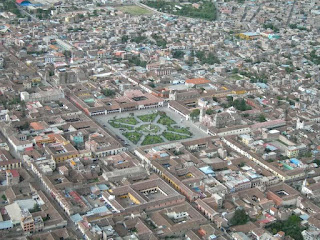Some aerial views of Peru
Perhaps soon will be pictures shots from the Peruvian
TV Chasqui II, developed at the National University of Engineering, UNI.
The map of Peru from space. Humboldt sea, coast, mountains and jungle are appreciated. Lake Titicaca is always visible on any scale map of Peru. Amazing.
Miraflores, one of the districts to the sea. Great pictures.
Callao, Peru's first port coupled to the capital, Lima. Foul development and their capacity is limited by lack of political and firmness in decision authorities. La Punta, the gateway to the Italian immigrants who then brought their culture and ingenuity in Peru. Real Felipe Fortress, last stronghold of the Spanish before withdraw forever from Peru, a colony which had been plundered for 300 years is appreciated.
North, Caral is the third oldest in the world, contemporary with the pyramids of Egypt place, is located in the middle of mountains 190 km north of Lima. It is the oldest civilization in America and has approximately 5,000 years old.
South of Lima, Ica we find the Nazca Lines, preserved thanks to the selfless work of Dona Maria Reiche, a German I love Peru with intensity.
Arequipa, rebellious and untamed city, called the White City building material, ashlar used profusely in the historic capital.
Chachani volcano 55 kilometers, 32 kilometers Pichu
Pichu and the imposing Misti just 17.5 kilometers from the main square. There
are more volcanoes, but these are the closest.
Cotahuasi Canyon, Arequipa, the fourth deepest in the world with a depth of 3.535 meters cannon; It is second only to Yarlung Tsangpo Canyon with 5.590 meters, Apurimac Canyon with 4.691 meters, Kali Gandaki Canyon with 4,375 deep.
Ayacucho, the city where the independence of Peru was consolidated. A magnificent aerial photography. The Cathedral and the Municipality is observed. It is a city that has 33 colonial churches, but it is a pity that not all are in good condition. But worth seeing and appreciating the original form of construction of altarpieces in the Cathedral. I do not know if these altarpieces, which seem to overcome gravity, but there's nothing like seeing them up close are made elsewhere in the world. And be amazed.
Cusco, the capital of the Incas always mysterious, always magical. The imposing colonial church is observed.
Puno, the highest lake in the world. It is navigable and belongs to two countries, Peru and Bolivia.
In Lambayeque, birthplace of important pre-Hispanic cultures, the Museum of Sipan can be seen, with an architecture that resembles a pre-Inca pyramid that houses important treasures of the Moche culture. There are more than 2000 pieces of gold, besides pottery and funerary objects. If there is as much by the depredations of tomb robbers who for decades almost wiped out the vestiges.
Los Andes in the Cordillera Blanca show the imposing mountains and beautiful lakes. Pity that the warming has setback in glaciers and loss of water masses.
The quarter note. In the south, the Madre de Dios there is something to show for now but with the depredations of illegal miners and protected in collusion with the authorities, indolent, is running out with every trace of beauty. What happened in Brazil Bento Rodriguez, is repeated with more force in Peru.
Small towns also have their charm. San Miguel, Cajamarca, in northern Peru, where I was born. The photographs were taken with a drone.
To appreciate all this must come to Peru. Some scenes of the landing at the Jorge Chavez International Airport, located in the capital.
https://www.youtube.com/watch?v=jqqCF0PhTNM







































































